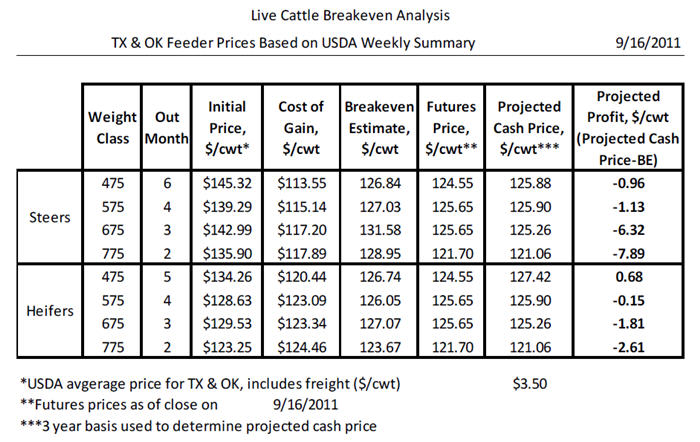Cattle Feeders Catch Glimpse of Positive Margins

The week ending September 16th was marked with feeder cattle prices slightly higher than the previous week. Demand for lighter weight cattle, as health issues are a concern, is softer than demand for heavier cattle. Additionally, pen space is limited in some instances as beef cows have found their way into confined feeding operations.
Live cattle futures prices have strengthened considerably since the beginning of the month, this combined with corn weakening approximately $0.80/bu during the same period, has made feeding margins much more favorable.
As can be seen, some classes of cattle show profit that can be locked in. As our performance estimates are conservative, there is opportunity for profitability if cattle feed better than expected.
The corn market has traded lower because of strong harvest news out of Europe and better than expected initial yields out of the United States. However, given the strong demand for the grain crop, it would not be unexpected for corn price to find support around $7.00/bu (basis December).
With that, this may be the opportunity cattle feeders have needed to lock in grain prices for the cattle currently on feed; which should take them through early summer 2012.
Weekly USDA feeder cattle prices for TX and OK were used to calculate projected breakevens on cattle bought last week, week ending September 16, 2011. Break-evens were calculated for each weight group within sex (steer and heifer). Ration price, $/ton dmb, was estimated at $320. Other variables including interest, yardage and % feed financed were estimated to be 6%, $0.05/d and 100%; respectively. As it is known that actual input estimates will vary greatly by region and by yard within region, our goal is to illustrate pricing differentials between weight classes and sexes of cattle.








